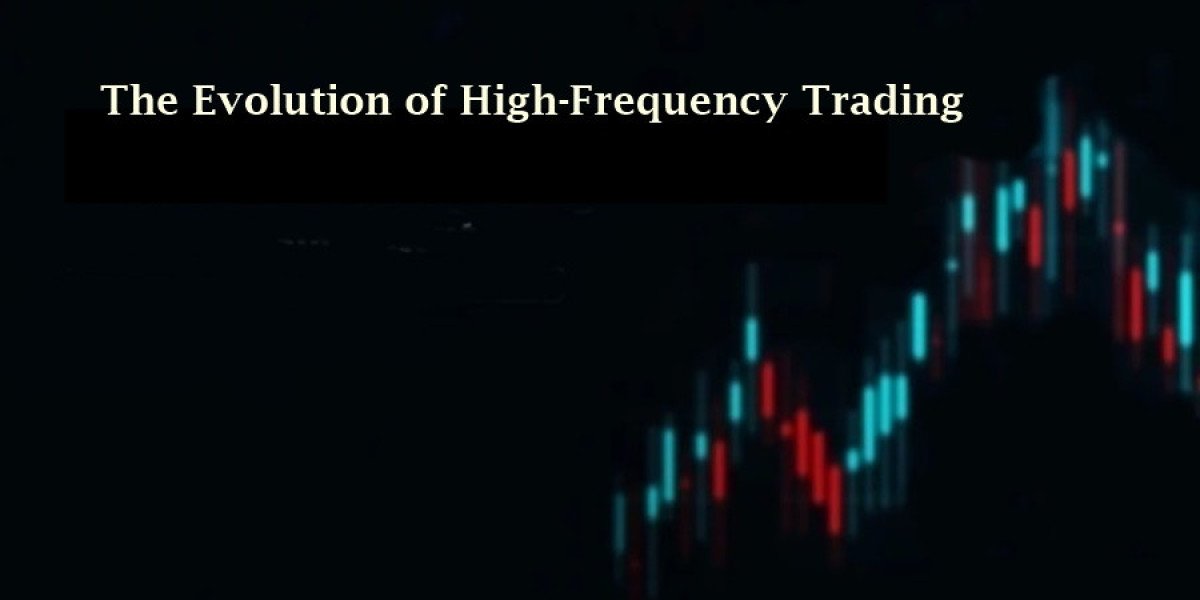High-Frequency Trading (HFT) has transformed financial markets, introducing speed and efficiency but also sparking debate over its impact on market fairness and stability. This article delves into the evolution of HFT, its benefits, the controversies surrounding it, and its overall impact on financial markets.
What is High-Frequency Trading?
Definition and Characteristics
High-Frequency Trading (HFT) refers to the use of sophisticated algorithms and high-speed computers to execute large numbers of orders at extremely high speeds. Key characteristics of HFT include:
- Speed: HFT firms aim to execute orders within microseconds or milliseconds, taking advantage of even the smallest price movements.
- Automation: Algorithms automatically execute trades based on predefined criteria, minimizing human intervention.
- Volume: HFT involves executing a large number of trades, often holding positions for very short periods.
- Market Making: HFT firms often provide liquidity by placing a large number of buy and sell orders, profiting from the bid-ask spread.
The Evolution of High-Frequency Trading
Early Beginnings
HFT began in the early 2000s, driven by advances in technology and regulatory changes that promoted electronic trading. The introduction of decimalization in 2001, which allowed stock prices to be quoted in pennies rather than fractions, provided more opportunities for HFT strategies.
Technological Advancements
The evolution of HFT has been closely tied to technological advancements. Improvements in computer processing power, data transmission speeds, and algorithmic trading systems have enabled HFT firms to execute trades at unprecedented speeds.
Regulatory Environment
Regulatory changes have also played a significant role in the evolution of HFT. The Regulation National Market System (Reg NMS) in the United States, introduced in 2007, aimed to promote competition and improve the fairness of the markets, inadvertently providing a fertile ground for HFT to thrive.
Benefits of High-Frequency Trading
Increased Liquidity
HFT firms act as market makers, providing liquidity by constantly placing buy and sell orders. This increased liquidity can reduce bid-ask spreads, making it cheaper for other investors to trade.
Efficient Price Discovery
By rapidly executing a large number of trades, HFT contributes to efficient price discovery. Prices adjust more quickly to reflect new information, enhancing market efficiency.
Reduced Transaction Costs
HFT can reduce transaction costs for other market participants by narrowing bid-ask spreads and increasing market liquidity. This can make trading more affordable for all investors.
Enhanced Market Efficiency
HFT firms can quickly identify and exploit arbitrage opportunities, correcting price discrepancies across different markets. This enhances overall market efficiency by ensuring prices more accurately reflect underlying values.
Controversies and Criticisms
Market Fairness
Critics argue that HFT creates an uneven playing field, favoring firms with the fastest technology and the most sophisticated algorithms. Smaller investors and traditional market participants may find it challenging to compete, leading to concerns about market fairness.
Market Volatility
HFT has been criticized for contributing to market volatility. The rapid execution of large volumes of trades can amplify price movements, particularly during periods of market stress. The "Flash Crash" of May 6, 2010, when the Dow Jones Industrial Average plunged nearly 1,000 points within minutes, is often cited as an example of HFT exacerbating market volatility.
Predatory Trading Practices
Some HFT strategies, such as "quote stuffing" and "layering," have been criticized as predatory. These practices can manipulate market prices and create false signals, undermining market integrity and harming other investors.
Regulatory Scrutiny
HFT has attracted significant regulatory scrutiny. Authorities worldwide are examining the impact of HFT on market stability and fairness, with some calling for stricter regulations to curb potentially harmful practices.
Regulatory Responses
United States
In the U.S., regulatory bodies such as the Securities and Exchange Commission (SEC) and the Commodity Futures Trading Commission (CFTC) have increased their oversight of HFT. Initiatives such as the implementation of the Consolidated Audit Trail (CAT) aim to enhance market transparency and monitor HFT activities more effectively.
Europe
The European Union's Markets in Financial Instruments Directive II (MiFID II), implemented in 2018, introduced stringent requirements for HFT firms. These include obligations to maintain robust risk controls, provide transparency, and ensure fair and orderly trading.
Asia
Regulatory approaches in Asia vary, with some countries adopting stricter measures to control HFT. For instance, Japan has introduced rules to enhance the monitoring of HFT activities, while Singapore has implemented guidelines to promote fair and efficient markets.
The Future of High-Frequency Trading
Technological Advancements
The future of HFT will be shaped by ongoing technological advancements. Developments in artificial intelligence, machine learning, and quantum computing could further enhance the speed and sophistication of HFT strategies.
Regulatory Developments
Regulatory responses will continue to evolve as authorities seek to balance the benefits of HFT with the need to ensure market stability and fairness. Striking the right balance will be crucial for the sustainable development of HFT.
Market Adaptation
Traditional market participants are increasingly adopting advanced technologies to compete with HFT firms. This trend is likely to continue, leading to a more technologically advanced and competitive market environment.
Conclusion
High-Frequency Trading has significantly impacted financial markets, offering benefits such as increased liquidity, efficient price discovery, and reduced transaction costs. However, it also presents challenges related to market fairness, volatility, and regulatory scrutiny. As technology and regulation continue to evolve, the future of HFT will depend on striking a balance that maximizes its benefits while mitigating its risks. Understanding the dynamics of HFT is essential for navigating its complexities and leveraging its potential in the financial markets.







